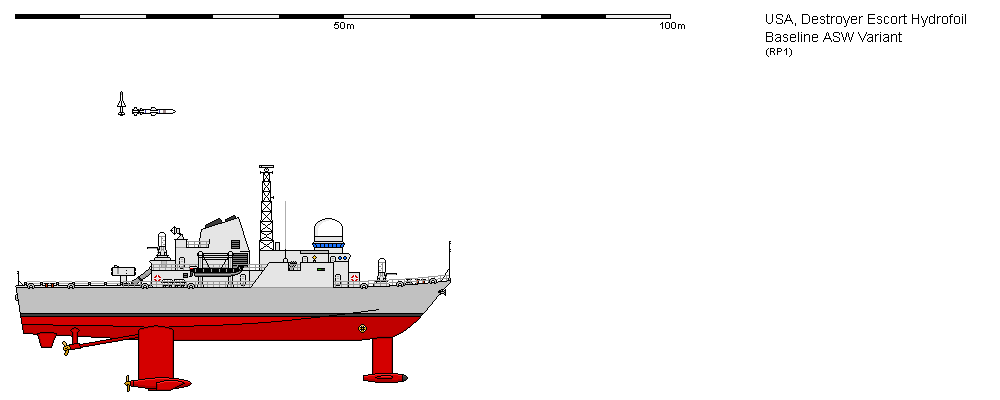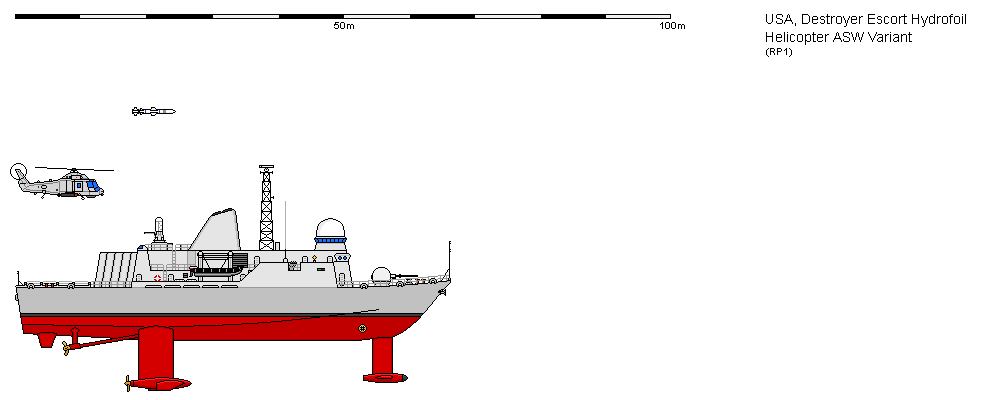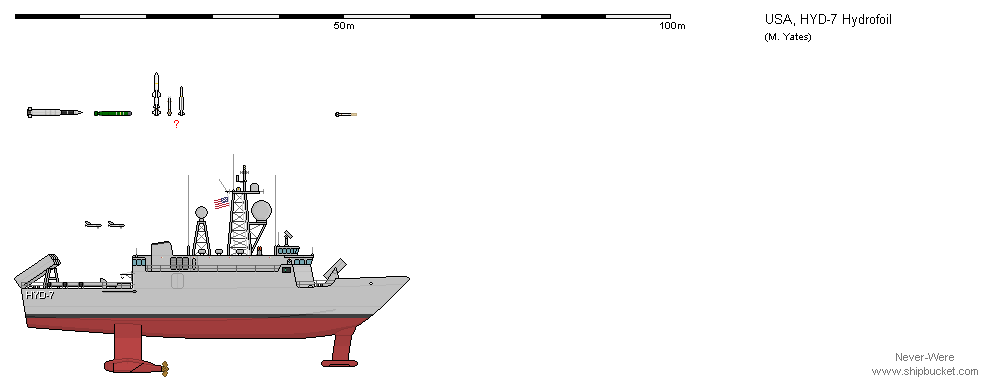
水中翼護衛艦
- ※1976年〜1979年のプロジェクトであるAdvanced Naval Vehicles Concepts Evaluation(ANVCE)は、ボーイング社が実施した設計研究に基づいて、より大きな1,300tの水中翼護衛艦(DEH)の設計案。50ktで2,500浬〜3,700浬持つ予定だった


- ※下の画は上の案の元になった1970年代末に設計したAdvanced Naval Vehicles Concept and Evaluation(ANVCE)のボーイングHYD-7。グラマン社が設計したのはHYD-2案(1(HF12の所を参照)、2)

- ↑The Advanced Naval Vehicles Concepts Evaluation project or ANVCE was initiated
to obtain the necessary information for naval vessels for the 1980-2000
time frame. One of the design studies during this period is the aforementioned
Boeing hydrofoil HYD-7, an anti-submarine warfare orientated escort. The
design was to displace 1,300tons and be capable of 70 knot dash speeds
whilst for its size be very heavily armed with: 24x vertical launch Advanced
Self Defence Missile (ASDM) (as yet undeveloped but seemingly likely to
result in RAM or ESSM). 8x vertical launch Harpoon. 12x rocket-propelled
Advanced Lightweight Torpedoes (The weights suggest a Sea Lance sized weapon
or Sea Lance itself). 6x Mk. 48 heavyweight torpedoes in fixed launchers.
In addition to the plethora of weapon systems the design was also schemed
with: The launch and recovery of remotely piloted vehicles via a pneumatic
ram and net. (12 in total). Both rocket and over-the-side launching of
sonobuoys (6+14). Towed linear array sonar Active/Passive towed sonar (SADTOS).
Active/Passive Reliable Acoustic Path Sonar (APRAPS). Furthermore, the
design was developed in such a way as to be able to undertake the mine-countermeasures
and mine-laying missions with stern area being modified to suit. Sensor
wise the design centred around a developed higher-power TAS and lightweight
TWS FCR with an infra-red detector mounted high on the mast for supplementary
and emergency use. It should be noted that the placement of some antennas
is conjectural based on requirements outlined in the brief. Image courtesy
of Shipbucket.
Update 19/10/16

